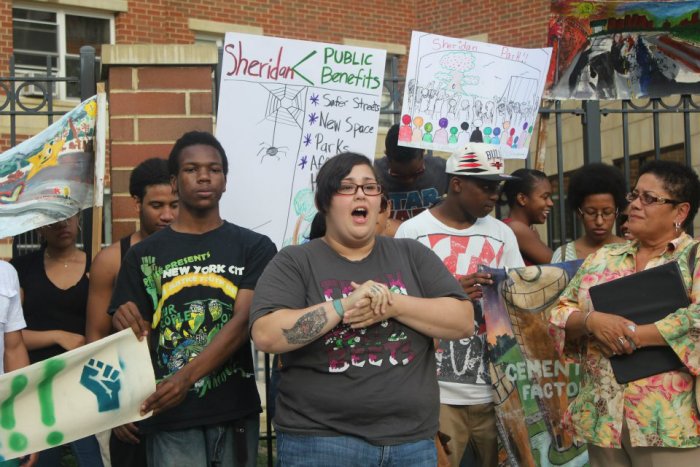
Pratt Center
The Sheridan Expressway Saga - a community fights to be sustainable

In June, Pratt Center joined our partners, members of the Southern Bronx River Watershed Alliance (SBRWA), and walked out of a meeting in protest of the City’s announcement that its federally-funded TIGER study would exclude further consideration of removing the Sheridan Expressway. The SBRWA is a coalition of community-based and citywide organizations that has worked together since 1997 to create a new vision for the Sheridan Expressway corridor– an underutilized highway that is part of a transportation system that serves neither truckers nor community residents well.
At a protest on June 28th the SBRWA called attention to the corridor’s pressing issues. The Sheridan Expressway, an underutilized highway fragment just over a mile long, is part of a transportation system that serves neither local truckers nor community residents well. It blocks access to the Bronx River waterfront and to new parks that are part of the Greenway while consuming precious land and forcing trucks to travel on local streets to reach food distribution markets on the Hunts Point peninsula. The SBRWA, of which Pratt Center is a member, has developed a Community Plan that addresses transportation needs for the area, creates opportunities for community-serving redevelopment such as new open space and affordable housing and removes blight.
Currently, the City of New York is in the midst of studying land use and transportation options for the area with $1.5 million in funding from the federal TIGER program. The SBRWA action protested an announcement by the City that it would not fully study the complete removal of the Sheridan Expressway in its analysis. More than 50 community members joined by the office of US Representative José Serrano and backed by Council Member María del Carmen Arroyo called on the City to do fair, transparent and thorough analysis of all the elements of the Community Plan.
The SBRWA is actively working to ensure that the outcome of the TIGER study reflects the values and priorities of local residents and workers – including the removal of trucks from local streets, the creation of direct access to the Hunts Point peninsula, improved transit access and safe transportation options for pedestrians and bicyclists, the creation of quality permanent jobs for local residents through new economic development, waterfront access to the Bronx River, the creation of re-developable land and – most critically – that residents have a meaningful voice in shaping the decisions that will affect them. The TIGER study is expected to finalize its recommendations by late winter 2013. For more information, check out Streetsblog.